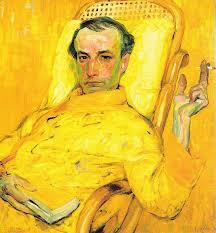A Modern Flâneur
The Modern Flâneur in no way resembles the apathetic and lackadaisical figure of the stroller, walker, wanderer or idle and dispassionate observer archetypal of the desperate Paris culture in the early nineteenth century. However, it was during the two decades bound by 1850 and 1870, when Napoleon III and ‘Perfect of the Seine’ Baron Haussmann transformed a vulgar and sullen metropolitan sewer of human despair into the modern day “City of Lights”.
The rebuilding of Paris, more than a hundred and fifty years ago, became the new model for public works and urban design, calling for a new urban model to replace the ghostly and reclusive predecessor. Against incredible odds, and a divided Europe, Napoleon III and Baron Haussmann cobbled together competing public, business and governmental forces to complete the greatest urban renewal project of the last three centuries. During this period the French flâneur was given new meaning and importance as a cultural model and eclectic icon by Charles Pierre Baudelaire, French poet, essayist and art critic.

Through his 1863 essay “The Painter of Modern Life“ Baudelaire appealed to the influential avant-garde cadre of renaissance impressionists to emerge from the bohemian shadows of the eclectic Paris cafe society, abandon the laissez faire restraints of classical convention and lead an eighteenth-century culture into the nineteenth-century modernity of a new Parisian landscape with unrestrained artistic and literary freedom.
The creative and inventive transformation by Napoleon and Haussmann continued to inspire the esthetic and critical reviews of Charles Baudelaire and German philosopher Walter Benjamin encouraged a new artistic and literary vision of the modern city as a space for the investigation of corporate attitudes, changing social mores and environmental planning policy that reaches deep into the consciousness of the current millennium, and which became the clarion call to the artists and literary voices of Europe to be the cultural flâneurs of the the new industrial world sweeping through western civilization.
The twenty-first century flâneur, however, has become symbolic of a growing sense of intellectual alienation and the search to recapture the historic values of critical thinking. The modern flâneur avoids the linear path leading to intellectual perdition while turning, instead, towards the global perspectives of reciprocity, reflection and introspection that enrich each moment of new opportunity.

A timeless moment
Given for nature’s repose –
But . . . not forever
The American flâneur, however, has been drawn into events and, rather than a casual observer, has become an element of the new theoretical doctrines which view each event as a part of the whole rather than unique, interchangeable and irreplacable.
So, if you feel as though you are trapped on a digital track to mediocrity encountering one state of contradiction followed by another, and you refuse to yield to the damands of a collective mind-set, then please join me as we attempt to transform our lives at a time when we are all confronted with the suffocating influence of an increasingly industrialized and synthetic society.
Châz
